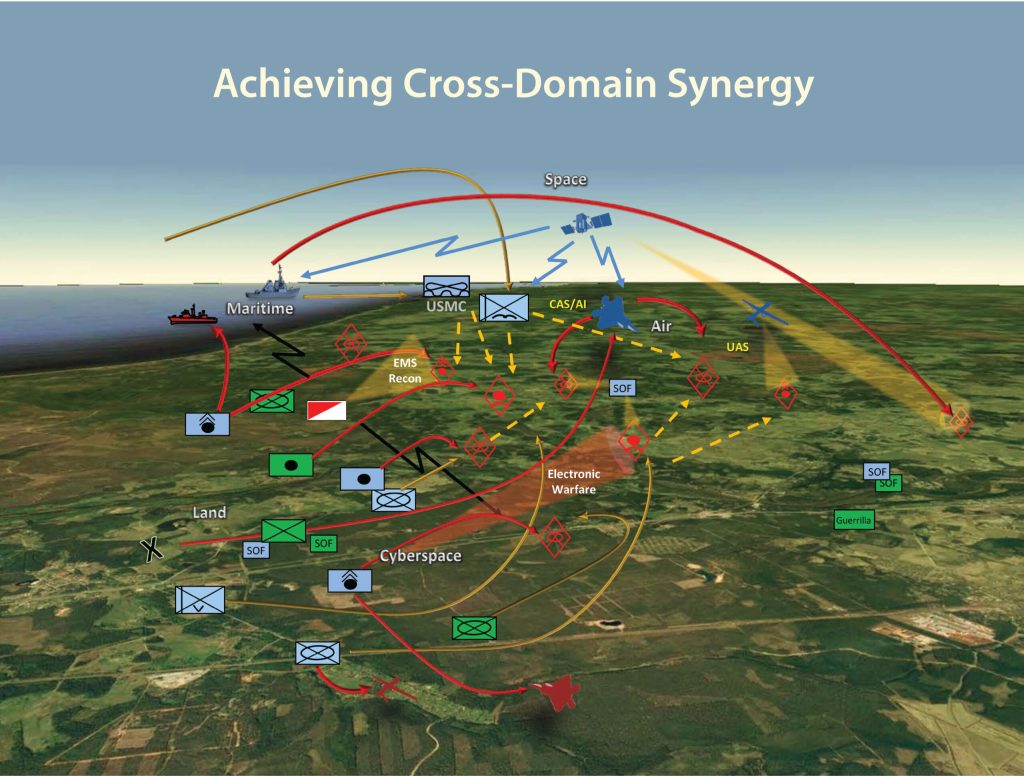In the dynamic landscape of modern warfare, the effective utilization of data on the battlefield has become paramount for achieving strategic superiority. As experts in the defense and aerospace industry, we recognize the pivotal role that advanced data analytics plays in enhancing operational efficiency, informed decision-making, and overall mission success.

The Evolution of Battlefield Data
In recent years, we have witnessed a paradigm shift in the way military operations are conducted. The traditional methods have given way to a more technologically advanced approach, where data becomes a force multiplier on the battlefield. Real-time data analysis has emerged as a game-changer, providing commanders with unparalleled insights into the ever-changing dynamics of a conflict.
Harnessing the Power of Artificial Intelligence
One of the key drivers behind the transformation of battlefield data is the integration of artificial intelligence (AI). AI algorithms are now capable of processing vast amounts of information at unprecedented speeds, enabling military forces to adapt swiftly to evolving scenarios. From predictive analytics to image recognition, AI has revolutionized the interpretation of data, offering a competitive edge in strategic planning and execution.
Advanced Sensor Technologies
In the quest for comprehensive battlefield awareness, the deployment of advanced sensor technologies has become instrumental. Sensor fusion, combining inputs from various sensors, ensures a holistic understanding of the environment. This includes everything from sophisticated surveillance systems to unmanned aerial vehicles (UAVs), creating a comprehensive data ecosystem that enhances situational awareness.
Network-Centric Warfare: A Force Multiplier
The concept of network-centric warfare has gained prominence as militaries worldwide embrace interconnected communication systems. This approach allows for seamless sharing of critical data among different units, facilitating coordinated efforts and rapid response. The synergy achieved through network-centric warfare amplifies the effectiveness of each component on the battlefield.
Cybersecurity Imperatives
As we delve deeper into the era of digitized warfare, the importance of robust cybersecurity measures cannot be overstated. With the reliance on interconnected systems and data-driven decision-making, safeguarding sensitive information from cyber threats is a top priority. A breach in cybersecurity could compromise not only data integrity but also the success of military operations.
Quantum Computing: Shaping the Future
Looking ahead, the emergence of quantum computing holds immense potential for transforming the landscape of data processing. The ability to handle complex algorithms exponentially faster than classical computers opens up new frontiers in data analysis. Quantum computing is poised to revolutionize encryption, further enhancing the security of critical battlefield data.
Case Studies: Successful Integration of Battlefield Data
Unmanned Systems in Action
In recent conflicts, the effective integration of unmanned systems has demonstrated the tangible benefits of leveraging battlefield data. UAVs equipped with advanced sensors provide real-time intelligence, surveillance, and reconnaissance (ISR) capabilities, significantly augmenting the decision-making process for military commanders.
Predictive Analytics in Logistics
The application of predictive analytics in logistical planning has streamlined supply chain management for military operations. By analyzing historical data and factoring in variables such as weather conditions and enemy movements, predictive analytics enables proactive decision-making, ensuring timely and efficient deployment of resources.
The Road Ahead: Continuous Innovation
In the ever-evolving landscape of defense technology, staying ahead requires a commitment to continuous innovation. Embracing emerging technologies, refining data analytics capabilities, and fostering a culture of adaptability are paramount. As defense and aerospace industry specialists, we understand that the journey towards maintaining supremacy on the battlefield is an ongoing process of evolution and refinement.
Conclusion
In conclusion, the effective utilization of data on the battlefield stands as a linchpin in the modern military landscape. From artificial intelligence to advanced sensor technologies, the integration of these elements empowers military forces to make informed decisions, enhance situational awareness, and ultimately, achieve success on the battlefield. As the defense and aerospace industry evolves, our commitment to pushing the boundaries of technological innovation remains unwavering, ensuring that we not only keep pace with the changing landscape but lead the charge in shaping the future of warfare.











